News
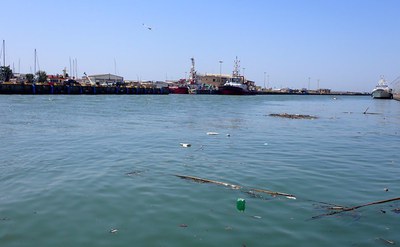
Computing riverine inputs of macrolitter into the Central Tyrrhenian Sea (Western Mediterranean Sea) from the Tiber River during the 1st post-pandemic year
Feb 04, 2025Published in the "peer reviewed" journal Science of the Total Environment, a joint ISPRA and Uniroma Tre study on the floating macrolitter that reaches the sea from the Tiber river through its two mouths (Fiumara grande and Canale di Fiumicino) with a particular temporal focus on 1 ° post-pandemic year.
In the period investigated, the results confirmed the high number of macrolitter transported by the river, with an estimated density at the mouth equal to 1170±151 objects/km2; However, compared to previous years, a reduction in macrolitter was detected with a percentage increase in single-use macro-waste linked to both packaging and objects linked to the pandemic period. Furthermore, much of the waste reaches the sea already fragmented.
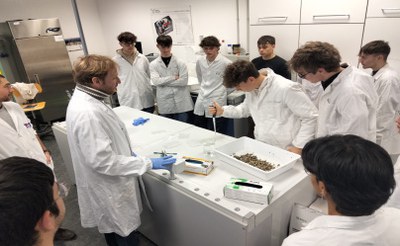
PCTO "Climate change: understand to act"
Feb 04, 2025The students of the 5 BIO of the “Carducci-Volta-Pacinotti” Higher Institute of Piombino took part in the path for transversal skills and orientation (PCTO), organized by two ISPRA researchers, committed to understanding the main causes climate change, the impacts on avifauna and migratory species and the study of marine alien species that are colonizing the Mediterranean Sea.
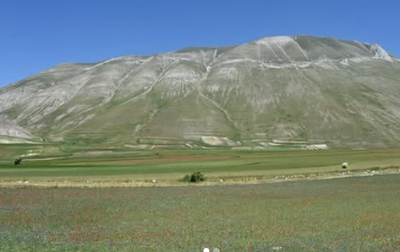
Second edition of the "Virtual Conference on Geoconservation"
Mar 27, 2025 — Mar 29, 2025 OnlineThe second edition of the "Virtual Conference on Geoconservation" is organized by the ProGEO South-Western Europe working group which includes Andorra, France, Italy, Portugal and Spain. The event is organized in collaboration with ISPRA, University La Sapienza of Rome and University of Perugia.
The conference will be held on 27-28-29 March and is online and free participation.
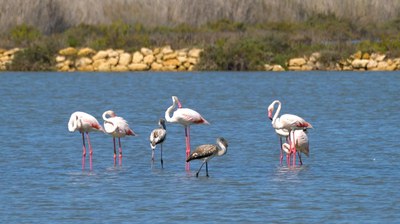
Reportage "Tarquinia salt pans, a treasure chest of biodiversity and geodiversity"
Feb 04, 2025The Saline di Tarquinia Nature Reserve is a hyperhaline wetland area, among the few remaining in the Tyrrhenian Sea, in whose extension various geological-environmental aspects are represented. The area is mostly occupied by shallow water basins, almost all communicating, salty and hyperhaline, separated by stone and wooden embankments. The Tarquinia Saline, currently SPA (Special Protection Area) and SAC (Special Conservation Area), became a protected area in 1980, as it was recognized as having a high naturalistic value, with environmental characteristics particularly suitable for stopping and the nesting of numerous migratory birds.
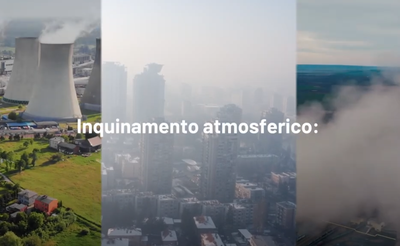
Air quality monitoring: the contribution of Copernicus and national collaboration
Feb 03, 2025How is air pollution monitored in Italy? Which bodies are responsible for this and how does the European Earth observation program Copernicus support monitoring and forecasting of air quality at national, regional and local levels?

Published "The environmental challenge for sustainable finance"
Jan 31, 2025Methodologies, information and environmental indicators
The disclosure requirements introduced by the regulation on sustainable finance are so substantial and complex that they imply the need for an adequate technical support framework in the implementation phase of the discipline, which helps companies and investors to fully understand the contents and methods for generating the environmental information required by the new standards.
The purpose of the Guideline “The environmental challenge for sustainable finance: methodologies, information and environmental indicators” is to provide an operational tool that aims to provide methodological support and guidance for environmental sustainability reporting, in accordance with the new European standards
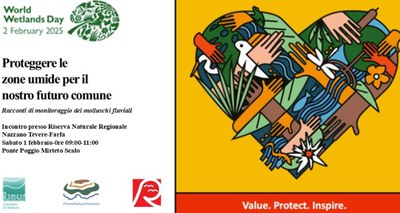
Tales of monitoring and river molluscs
Feb 01, 2025 — Feb 01, 2025 Regional Nature Reserve Nazzano Tevere-FarfaOn the occasion of World Wetlands Day 2025, the Participatory Science project "#teveremolluschifantastici...e dove trovarli"" is organizing an excursion on 1 February to the Nazzano Tevere-Farfa Regional Nature Reserve to talk about river ecology, freshwater molluscs and water monitoring with practical experiments. The project aims to increase awareness of river biodiversity and contribute to the conservation of inland water ecosystems, also by mapping the presence and distribution of molluscs, with a pilot project on the Tevere river; the data collected flows into the portal of the National Biodiversity Network.
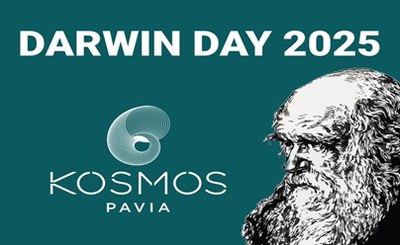
Darwin Day 2025
Feb 12, 2025 — Feb 12, 2025 PaviaDarwin Day is a celebration honoring Charles Darwin held on the anniversary of his birth on 12 February.
Kosmos, the natural history museum of the University of Pavia, in collaboration with the Department of Earth and Environmental Sciences and with the “Lazzaro Spallanzani” Department of Biology and Biotechnology of the University of Pavia, is organizing a conference in which researchers and university professors will address the different aspects of evolution
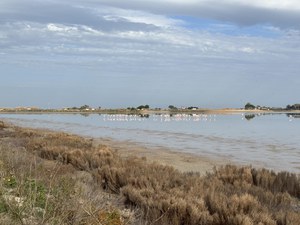
World wetlands day and the Puglia campaign carried out by ISPRA
Jan 30, 2025The number of aquatic birds has been one of the main metrics for assessing the conservation status of wetlands since the Ramsar Convention: an accurate method that is not affected by political pressure or exploitation. This January too, ISPRA carried out its share of field activities, together with the vast network of external detectors that widely covers the national territory as a perfect example of citizen science. The Institute's cars have been spotted everywhere, from the frozen reservoirs of Cadore to the mud of Capitanata, with demanding stops in the Venetian lagoons and some visits to the Tyrrhenian side.
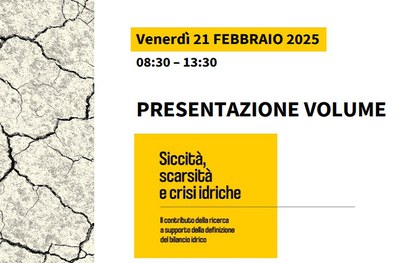
Presentation of the volume "Drought, scarcity and water crises - The contribution of research to support the definition of the water balance"
Feb 21, 2025 08:30 AM — Feb 21, 2025 01:00 PM Roma, CNR P.le Aldo MoroThe volume is a collective work written by the “Drought, scarcity and water crises” working group of the Department of Earth System Sciences and Environmental Technologies of the Cnr, with the contribution of around 100 authors from various Cnr Institutes and the support from ISPRA, the Civil Protection Department and the commissioner structure for water scarcity.
The objective of this presentation is to open a dialogue between the main national bodies and institutions involved in the topics of drought, management and governance of water resources.
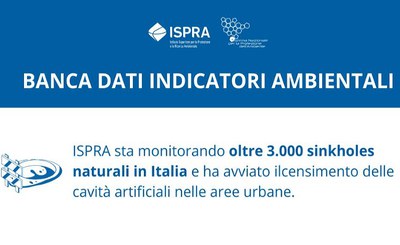
Areas subject to sinkholes - ISPRA Environmental Indicators Data base
Jan 29, 2025Sinkholes are chasms that suddenly open in the ground, with diameters that can reach hundreds of meters.
Depending on the causes from which they originate, they are divided into sinkholes of natural origin and sinkholes of anthropogenic origin.
According to ISPRA data, the regions most exposed to natural sinkholes include Friuli-Venezia Giulia, Lazio, Puglia, Campania and Toscana, while cities such as Rome, Naples and Cagliari are particularly vulnerable to sinkholes caused by human activities.
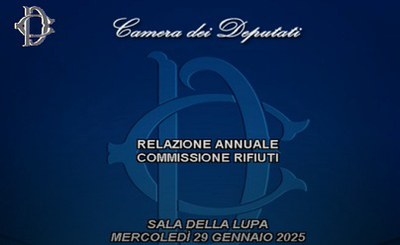
Annual report Waste Commission
Jan 29, 2025 — Jan 29, 2025 RomeThe annual report of the parliamentary commission of inquiry into illicit activities connected to the waste cycle and other environmental and agri-food offenses was held today at the Chamber of Deputies. 85 hearings have been held so far by the parliamentary commission of inquiry on illicit activities connected to the waste cycle and on other environmental and - this is a recently introduced area - agri-food offences. In detail, 71 hearings were held at the institutional offices of Palazzo San Macuto and 14 at the Prefectures of the local areas where the members were on mission. This was reported by Jacopo Morrone, president of the commission established in this legislature, while illustrating the annual report to the Chamber.
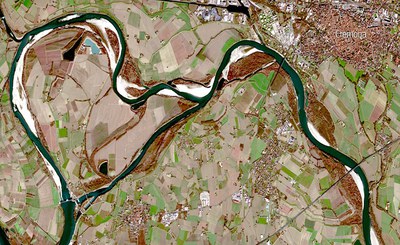
Current and future impacts of climate change: new assessment and forecasting tools thanks to the EU Copernicus programme
Jan 27, 2025Estimate the future availability of water resources and develop future projections of heat waves based on greenhouse gas emission scenarios, evaluate the risks of forest fires, predict the possible frequency of drought events and temperature and precipitation anomalies based on seasonal forecast. These are the objectives of the cooperation between national and regional bodies within the framework of the National Collaboration Program (NCP) with the European Center for Medium-Term Weather Forecasts (ECMWF) promoted by the European Union for the use of the tools of the Copernicus Service dedicated to climate change (C3S).
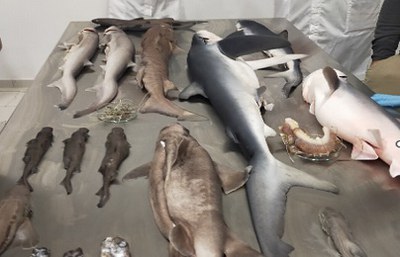
The Barcelona Convention: ISPRA at the practical training course for the conservation of cartilaginous fish of the Adriatic Sea and beyond
Jan 21, 2025 — Jan 23, 2025 Vlore (Albania)On January 21-23, the practical course on monitoring, identification and advanced research techniques for the conservation of cartilaginous fish in the Adriatic Sea was held in Vlore (Albania). Organized thanks to the joint efforts of UNEP-MAP (Barcelona Convention) and Sharklab ADRIA, and financed by MASE. Umberto Scacco and Massimo Dalù from ISPRA were present at the course under the expert guidance of Dr. Andrej Gajić from Sharklab ADRIA, and the supervision of the head of the SPA/RAC - Barcellona Convention, Lobna Ben Nakhla. During the course, samples of cartilaginous fish species of conservation interest from a marine area particularly rich in biodiversity in the waters of Vlora were analyzed.
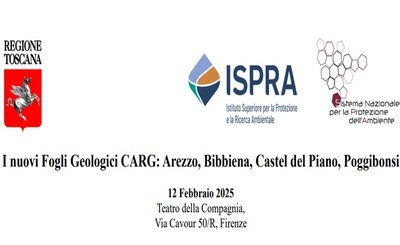
The new CARG Geological Sheets: Arezzo, Bibbiena, Castel del Piano, Poggibonsi
Feb 12, 2025 10:00 AM — Feb 12, 2025 04:30 PMOn 12 February, the Tuscany Region and the ISPRA Geological Service are organizing the conference "The new CARG Geological Sheets: Arezzo, Bibbiena, Castel del Piano, Poggibonsi" in Florence.
The conference is organized in collaboration with the Universities of Tuscany and the CNR and is APC accredited for geologists registered with the Order of Geologists of Tuscany.
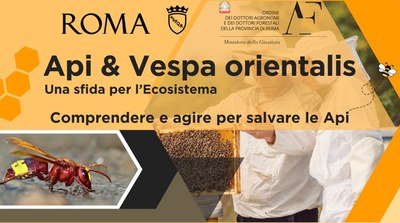
Bees & Vespa orientalis. A challenge for the ecosystem
Jan 28, 2025 10:00 AM — Jan 28, 2025 12:30 PMUnderstand and act to save bees
The conference "Api & Vespa orientalis. A challenge for the ecosystem" will be held on Tuesday 28 January in Rome. Experts in the sector will address the topic to help people understand the phenomenon and take action to protect bees.
In the meeting will participate an ISPRA researcher who will talk about the importance of correct communication of risks to the general public
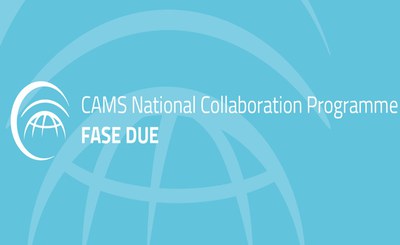
Copernicus Atmosphere Monitoring Service Project - Environmental Monitoring and Protection at a National Level
Jan 24, 2025CAMS National Collaboration Program Italy - Second Phase
The second phase of the CAMS Italia National Collaboration Program represents an important recognition of the significant results obtained in the first phase of activity in the field of atmospheric monitoring in Italy, promoting joint development actions between different users and researchers based, also promoting training activities and specific information.
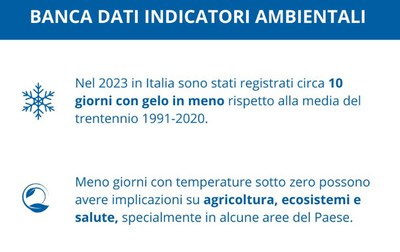
Days with frost - ISPRA Environmental Indicators Database
Jan 23, 2025ISPRA data confirm a decrease in the number of days with frost in our country.
In 2023 in Italy there were approximately 10 days less than the average for the thirty-year period 1991-2021
The Days with frost indicator from the ISPRA Environmental Indicators Database calculates the number of days in which the minimum air temperature drops below 0°C, a key parameter for monitoring the evolution of the climate and its effects.
Understanding these phenomena is essential to develop effective climate change adaptation strategies and respond to the challenges of global warming.
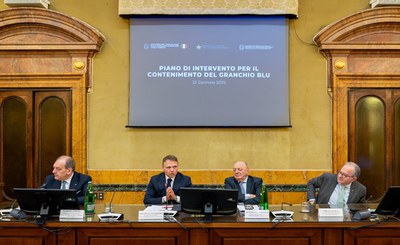
The Blue Crab containment plan presented to MASAF in the presence of ministers Lollobrigida and Pichetto Fratin
Jan 22, 2025 — Jan 22, 2025On 22 January at the Ministry of Agricultural, Food and Forestry Policies, the extraordinary commissioner for the Blue Crab, Pref. Enrico Caterino, accompanied by the Director of the Department for monitoring and protection of the environment for the conservation of biodiversity of ISPRA, Luigi Ricci , illustrated the contents of the "Intervention plan to contain and combat the phenomenon of the spread and proliferation of the blue crab species".
The result of joint work carried out with the technical support of ISPRA and with collaboration the National Research Council, CREA, Port Authorities, Ministries and territorial bodies of the Regions most affected by the emergency. The plan, with a total financing of 10 million euros - allocated in the Legislative Decree. Agriculture - for the two-year period 2025-2026, aims to protect the biodiversity of the affected habitats, contain and combat the proliferation of the invasive species, prevent further economic damage and promote the resumption of farming and fishing activities.
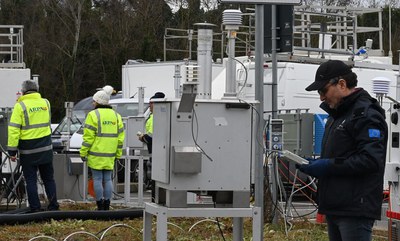
Measuring air quality: all the SNPA mobile laboratories gathered in Terni
Jan 22, 2025Ensure the quality of the measurements, the homogeneity of the procedures and the data produced. This is the objective of the technical comparison, organized by ISPRA in collaboration with Arpa Umbria, which starts in Terni on 23 January at the headquarters of the regional Agency. For two weeks the 21 mobile laboratories of the national SNPA system dedicated to the measurement of fine particles, ozone, nitrogen oxides and dioxides, benzene, metals, polycyclic aromatic hydrocarbons (PAHs) will be brought together.
ISPRA, as a National Reference Laboratory (pursuant to the Ministerial Decree of the Environment n° 67 of 02/04/2022), has the task of organizing and implementing reliability programs to which the institutions that manage the monitoring networks must participate pursuant to Annex I of Legislative Decree 155/2010. The objective of the intercomparison circuit - this is the technical term - is to achieve a harmonized improvement in the performance of air quality monitoring networks at a national level, in compliance with art. 17 and Annex I of Legislative Decree 155/2010 and subsequent amendments. and allow participants to improve the reliability of the measurement data they produce, comparing with the performances provided by the other participants and by the National Reference Laboratory, as well as to monitor the QA/QC procedures, defined by the Ministerial Decree 30/3/2017 to ensure the quality of the measurement results, and, if the circuit highlights instrumental or procedural deficiencies, to adopt the necessary corrective actions.
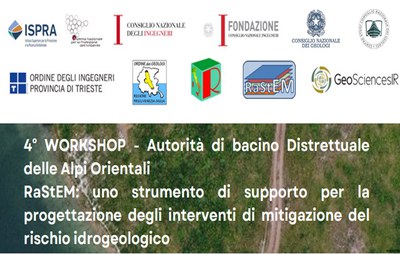
4th RaStEM Workshop: a support tool for the design of hydrogeological risk mitigation interventions
Feb 12, 2025 09:30 AM — Feb 12, 2025 01:30 PM Trieste, MIB Trieste School of Management, L.go Caduti di Nassiria 1RaStEM - Standardized Representation of Mitigation Effects - is a web gis tool developed by ISPRA with the dual purpose of guiding designers to a clear and homogeneous representation of the significant elements of a hydrogeological risk mitigation intervention and supporting them in the drafting of projects consistent with the criteria established by current legislation (DPCM 09/27/2021) for their financing by the Ministry of the Environment and Energy Security (MASE).
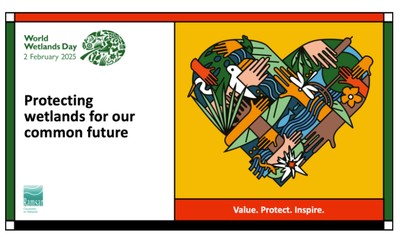
World Wetlands Day 2025
Feb 02, 2025 — Feb 02, 2025The World Wetlands Day on February 2, celebrates the signing of the Ramsar Convention on Wetlands of International Importance in 1971, and aims to raise awareness around the world of the great importance of wetlands for people and for our planet.
The Ramsar Convention defines wetlands as “marshes, bogs or reservoirs, whether natural or artificial, permanent or temporary, with stagnant or flowing water, fresh, brackish or salt, including expanses of marine water whose depth, during low tide, does not exceed six metres". The Convention is the only international treaty on the environment that deals with these particular ecosystems which, in addition to hosting and conserving a rich biological diversity of plants, birds, mammals, reptiles, amphibians, fish and invertebrates, guarantee huge resources of water and food and play a fundamental role in mitigating climate change. The integrity of these environments is threatened by human activities.
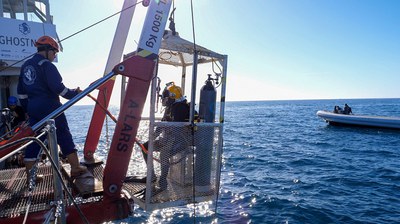
Operation Ghostnets: 30 "ghost nets" recovered between Augusta and Syracuse
Jan 20, 2025ISPRA saves flora and fauna
60,000 square meters of seabed inspected, hundreds finally freed from nets up to 260 meters long which are once again breathing and repopulating; free protected species that were trapped
As many as 60,000 square meters of seabed inspected, over 30 ghost nets up to 260 meters long (approximately equal to a 100-storey skyscraper) recovered at a depth of 40-60 meters and hundreds of square meters of seabed finally freed: it is the result of the “Ghostnets” operation conducted by ISPRA along the Sicilian coast, between Augusta and Syracuse. The intervention, part of the project MER (Marine Ecosystem Restoration) financed by the Pnrr, was carried out with the support of the RTC Ghostnets (CASTALIA, CONISMA and MAREVIVO) and allowed the recovery of various types of nets: trawl, gillnet, tangle of ropes, lines and pots and to free trapped protected species. “With this operation, hundreds of square meters of valuable habitats will gradually be able to “breathe” again and encourage recolonization by the surrounding marine species.
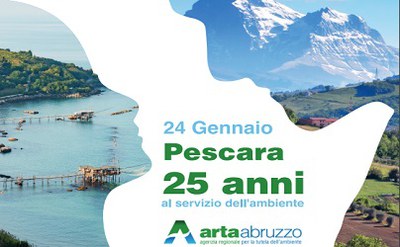
Environment and health: Research projects for sustainable development
Jan 24, 2025 10:15 AM — Jan 24, 2025 04:30 PM PescaraOn the occasion of the 25th anniversary of ARTA Abruzzo, a study conference dedicated to the topic of environment and health will be held on Friday 24 January in Pescara, which will offer a space for discussion, open to all citizens, on ongoing initiatives and research to ensure a sustainable future, with particular attention to environmental protection and community well-being.
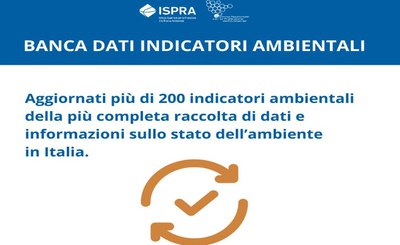
New update of the ISPRA indicators database
Jan 17, 2025More than 200 indicators from the ISPRA environmental indicators database have been updated, the objective is to promote greater environmental awareness and involve the scientific community, in particular that of environmental statistics and information, in the crucial environmental issues of our time.
The database of environmental indicators, organized into 39 environmental themes, with over 300 indicators (ISPRA core set), is the most complete collection of statistical data and information on the state of the environment in Italy created and managed by the Institute for the Protection and Environmental Research (ISPRA) in collaboration with regional agencies and autonomous provinces within the National System for Environmental Protection (SNPA).
The indicators, classified under Environmental Themes, are structured in sheets containing descriptive information (metadata) such as, for example, the objectives to be achieved, the assessment of the state, the trend and data represented with graphs, tables and maps.

Meeting of the Intermunicipal Coordination on forest fires
Jan 18, 2025 09:30 AM — Jan 18, 2025 12:00 PM Fondi (LT)Next January 18th, in Fondi, the public meeting of the Intermunicipal Coordination on forest fires. An Intermunicipal Coordination has been established for months and meets regularly to promote a real commitment by all local communities against the devastating phenomenon of forest fires.
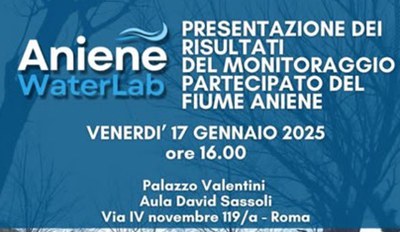
Presentation of the results of the participatory monitoring of the Aniene River
Jan 17, 2025 04:00 PM — Jan 17, 2025 06:00 PM Rome, Palazzo Valentini, Aula David SassoliDuring the meeting, the results of the monitoring activities which involved citizens, students and experts will be illustrated, collecting data on the ecological and chemical state of the waters of the Aniene river.
Ispra will participate with a report on #teveremolluschifantastici…e dove trovarli, the project the participatory science project for water quality and the conservation of river biodiversity; the project included in the portal of the National Biodiversity Network, maps the presence and distribution of freshwater molluscs, both native and non-native, within the Tevere river basin.
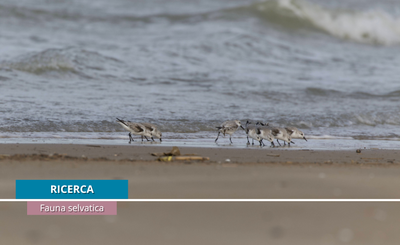
The international census of water birds begins for the 35th consecutive year
Jan 13, 2025Coordinated for Italy by ISPRA, the Wetlands International project promotes the counting of water birds around mid-January across the entire European territory
These days, censuses of wintering waterbirds are starting in more than 2000 Italian wetlands as part of the International Waterbird Census (IWC) project. The project is coordinated by ISPRA, which makes use of a network of over 500 expert detectors and at least triple the number of collaborators, distributed throughout the country. Now in their 35th year of continuous activity across the entire national territory, the IWC censuses represent one of the longest-running coordinated Italian study projects, certainly the first in terms of capillarity and regularity of coverage at a geographical level.
Water birds are a fundamental component of wetlands. Diversity and number of individuals provide crucial information on the health status and environmental quality of frequented sites, but also opportunities to enhance wetlands for recreational purposes in a sustainable way. The protection, improvement and where possible the restoration of Italian wetlands have implications that go well beyond the protection of the species they host, including for example the elimination of carbon from the atmosphere, the protection from extreme meteorological events, the mitigation of effects of climate change.
Waterbirds represent a shared wealth among peoples: their long and complex migrations unite wetlands and people, regardless of cultural and political borders.
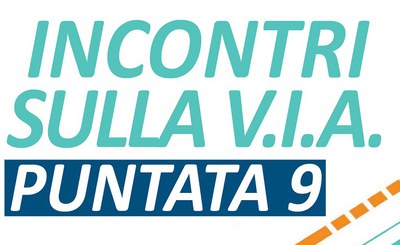
Meetings on the E.I.A. - Episode n.9
Jan 08, 2025Environmental Impact Assessment procedures
Meeting with Monica Pasca of the V.I.A. Commission National.
The E.I.A. it is not just a procedural obligation. With this podcast we tried to communicate and spread the importance of EIA. as a tool of sustainability and transparency, multidisciplinary and integrated, a meeting between the project and its environment. We talk about analysis of project alternatives and attention to all environmental factors and also other analysis procedures such as scoping, verification of eligibility or compliance
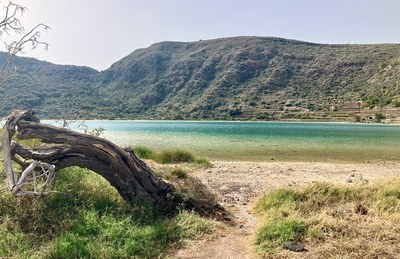
Public consultation for new SIC/ZPS sites beyond territorial waters
Jan 08, 2025The public consultation for new sites beyond territorial waters is open until 31 January 2025.
In order to complete the network of Natura 2000 sites beyond the limit of territorial waters in implementation of what is required by the Habitats and Birds Directives, a technical-scientific evaluation of the areas meeting the established criteria necessary for completion was carried out with the support of ISPRA of the network of Natura 2000 sites.
